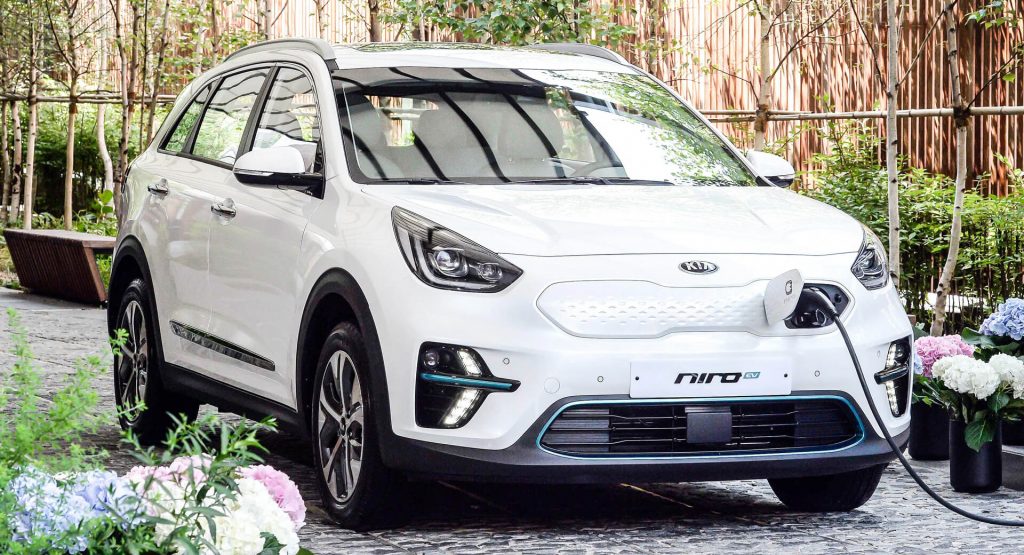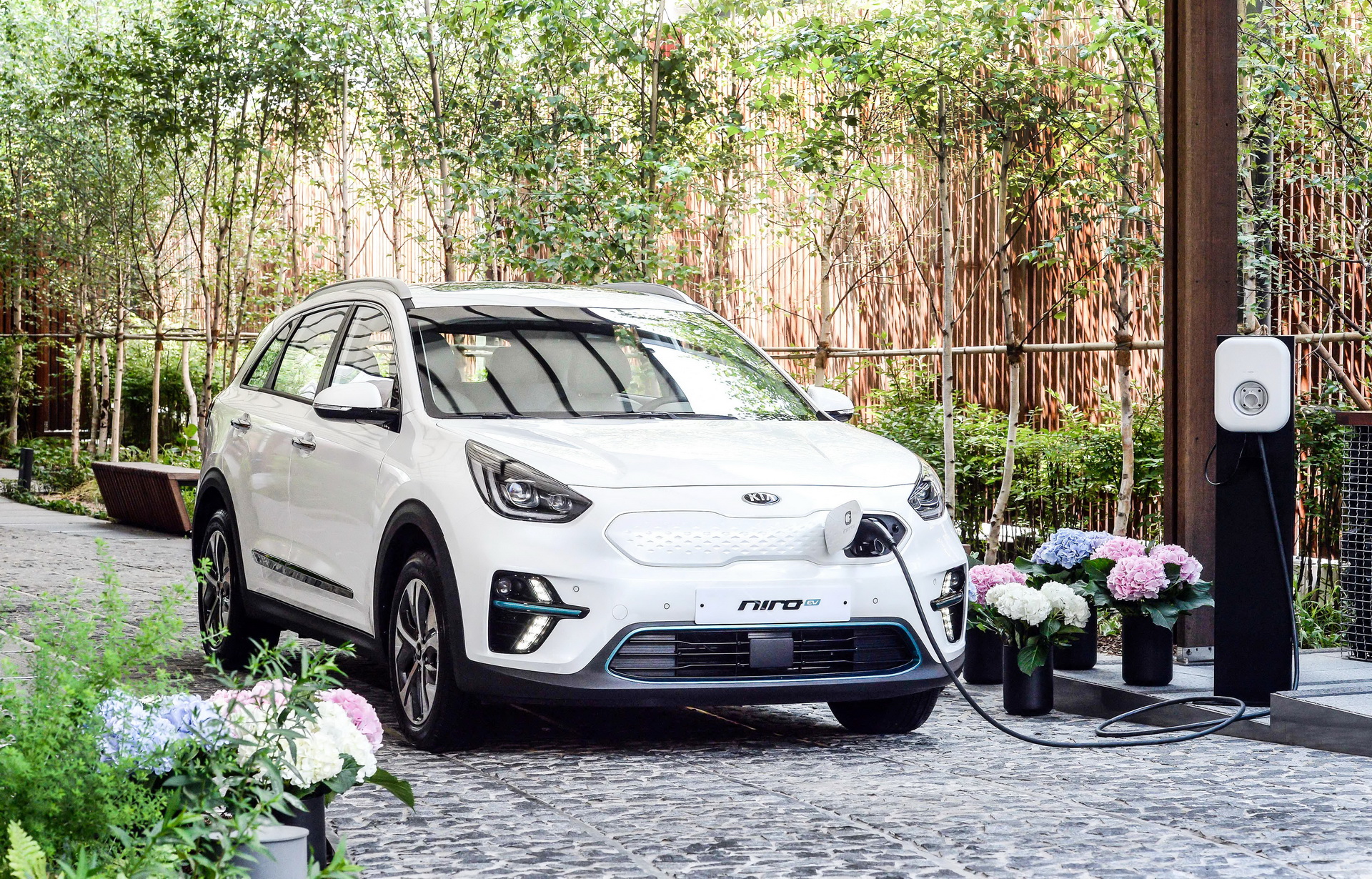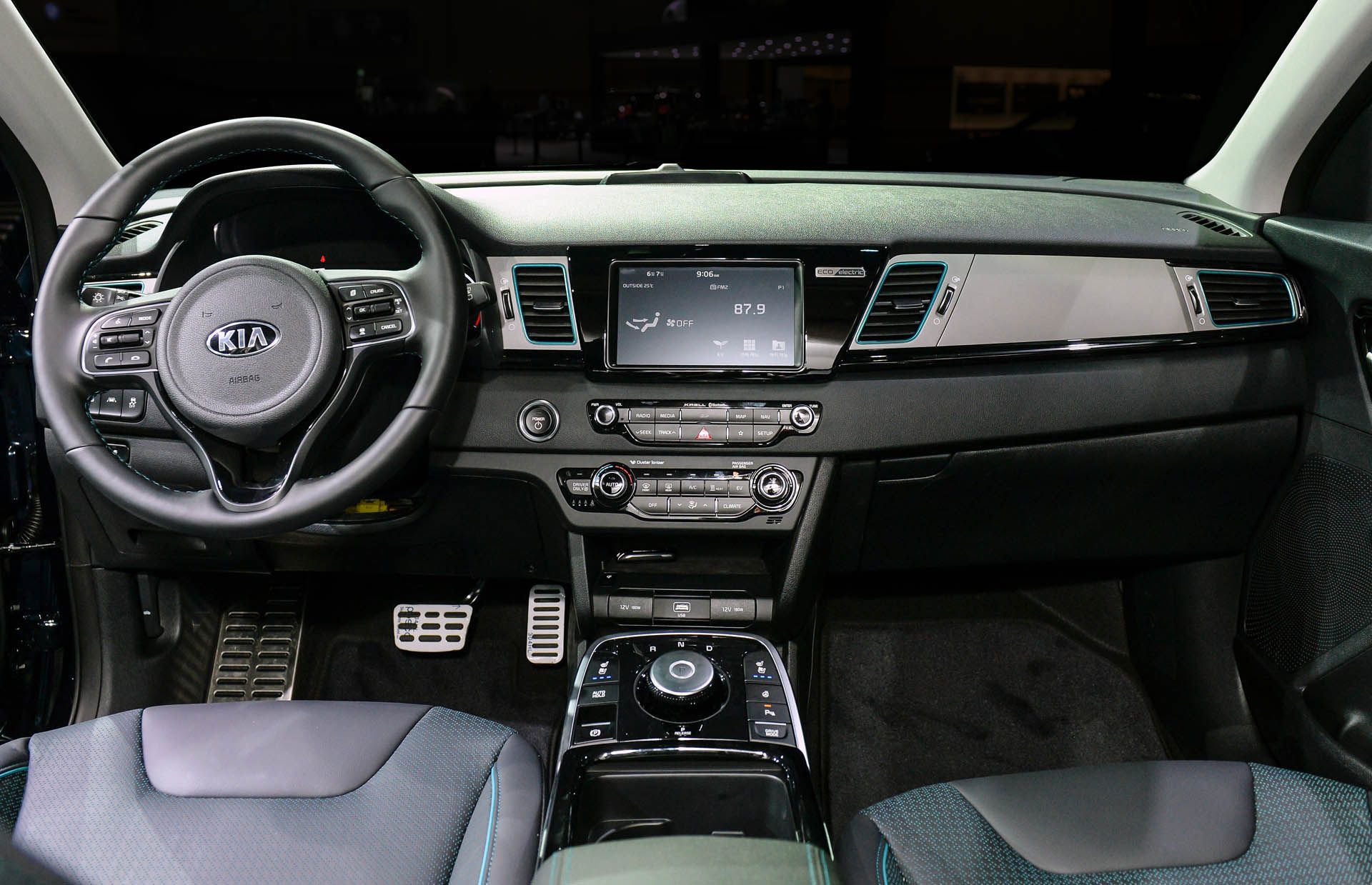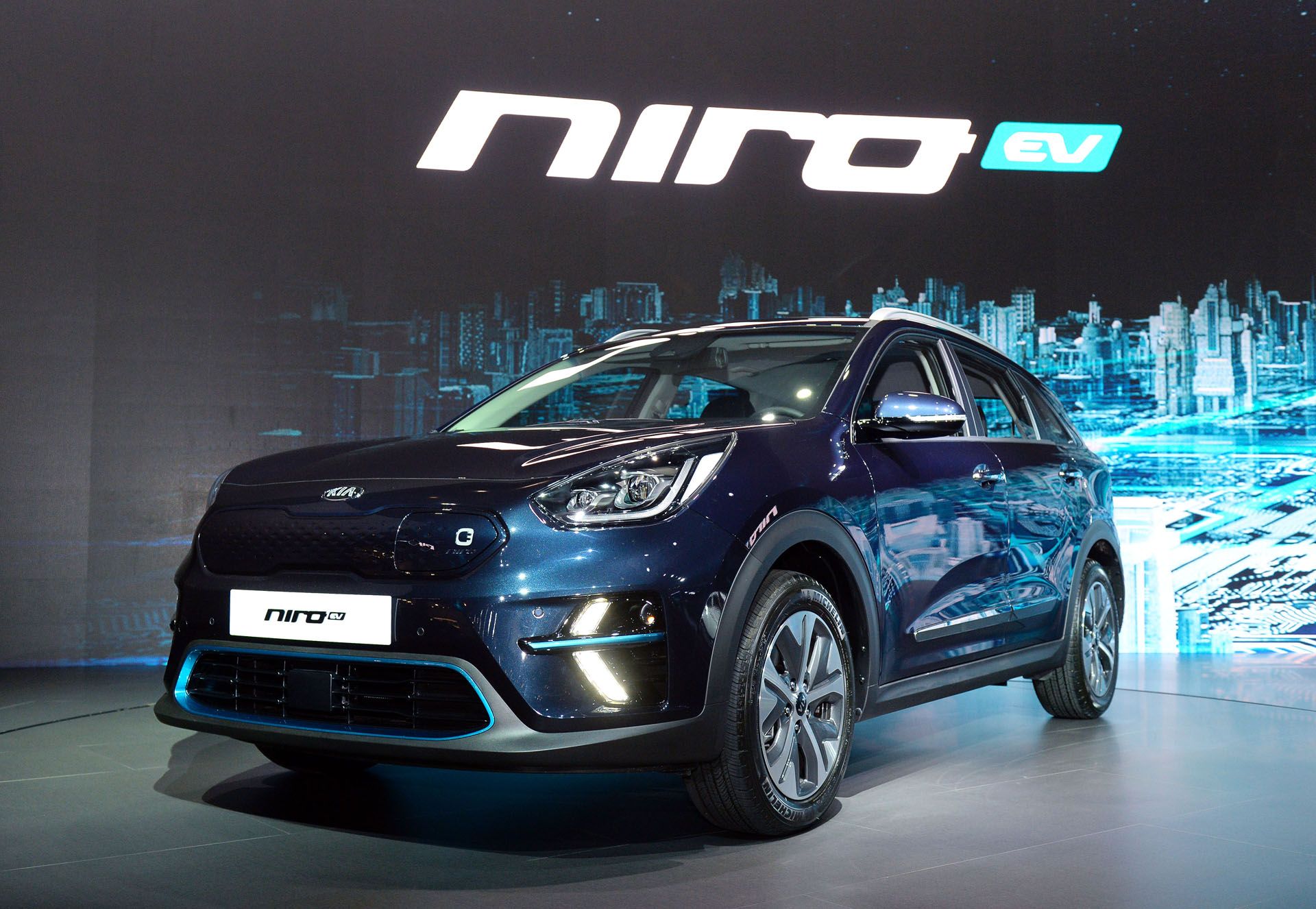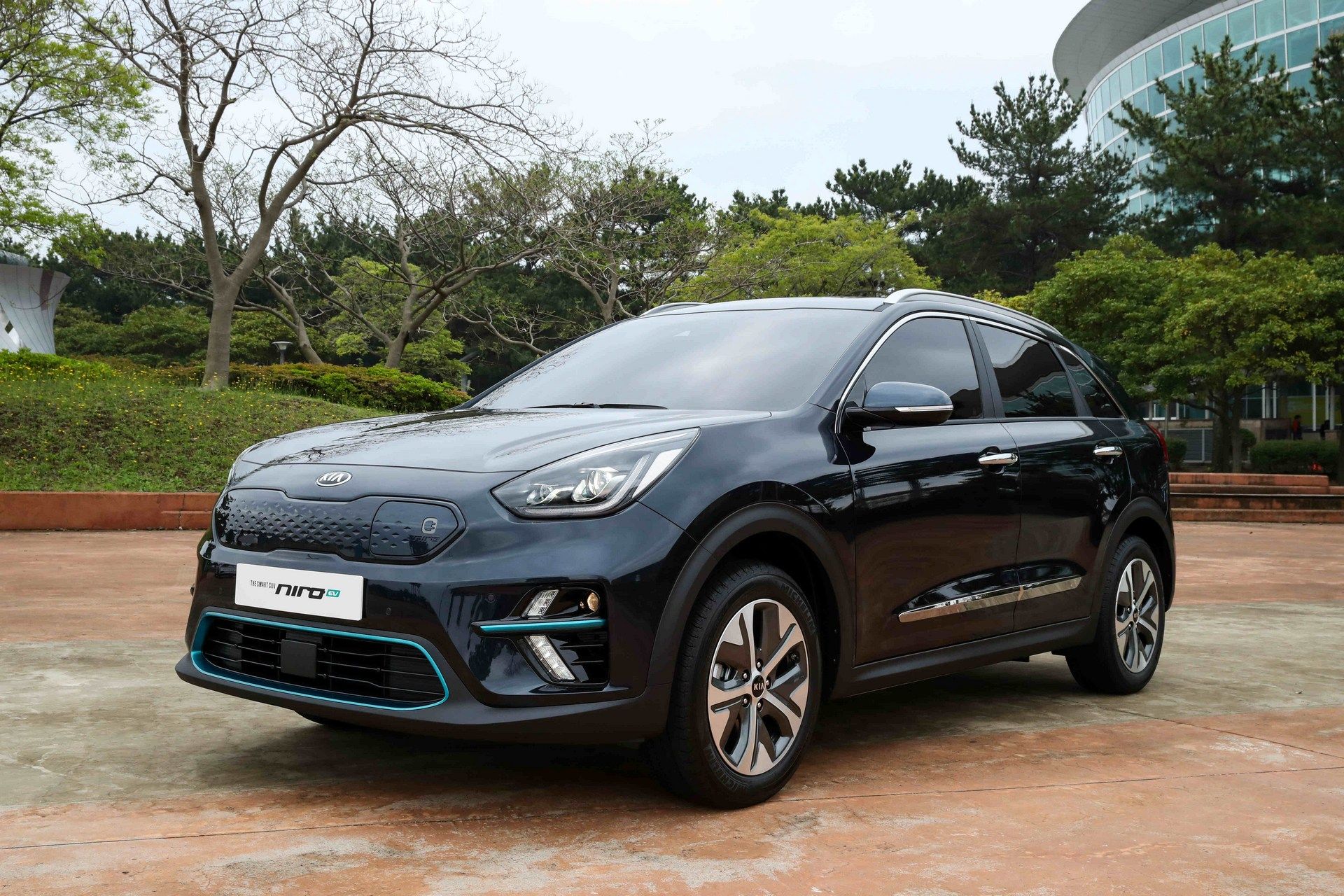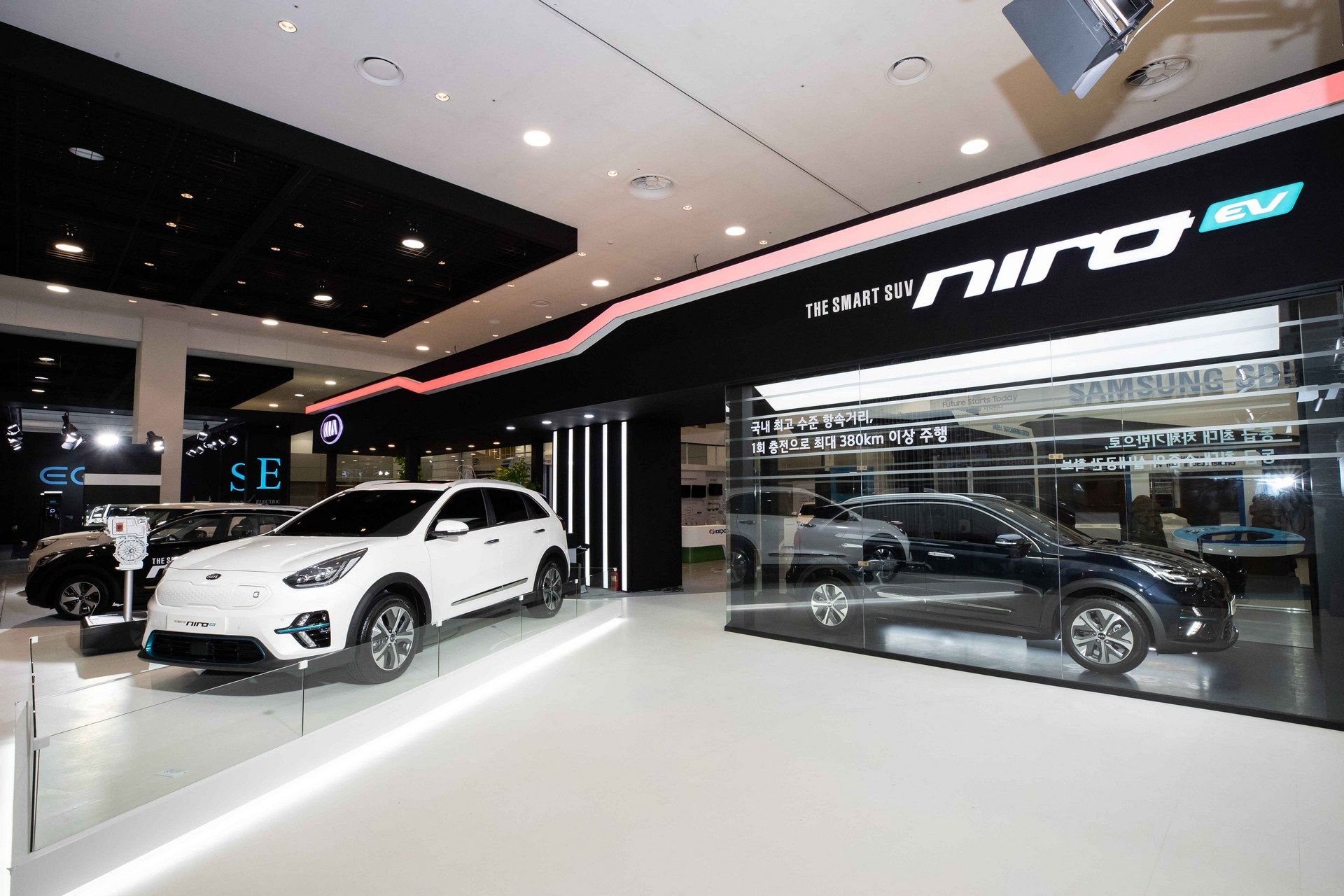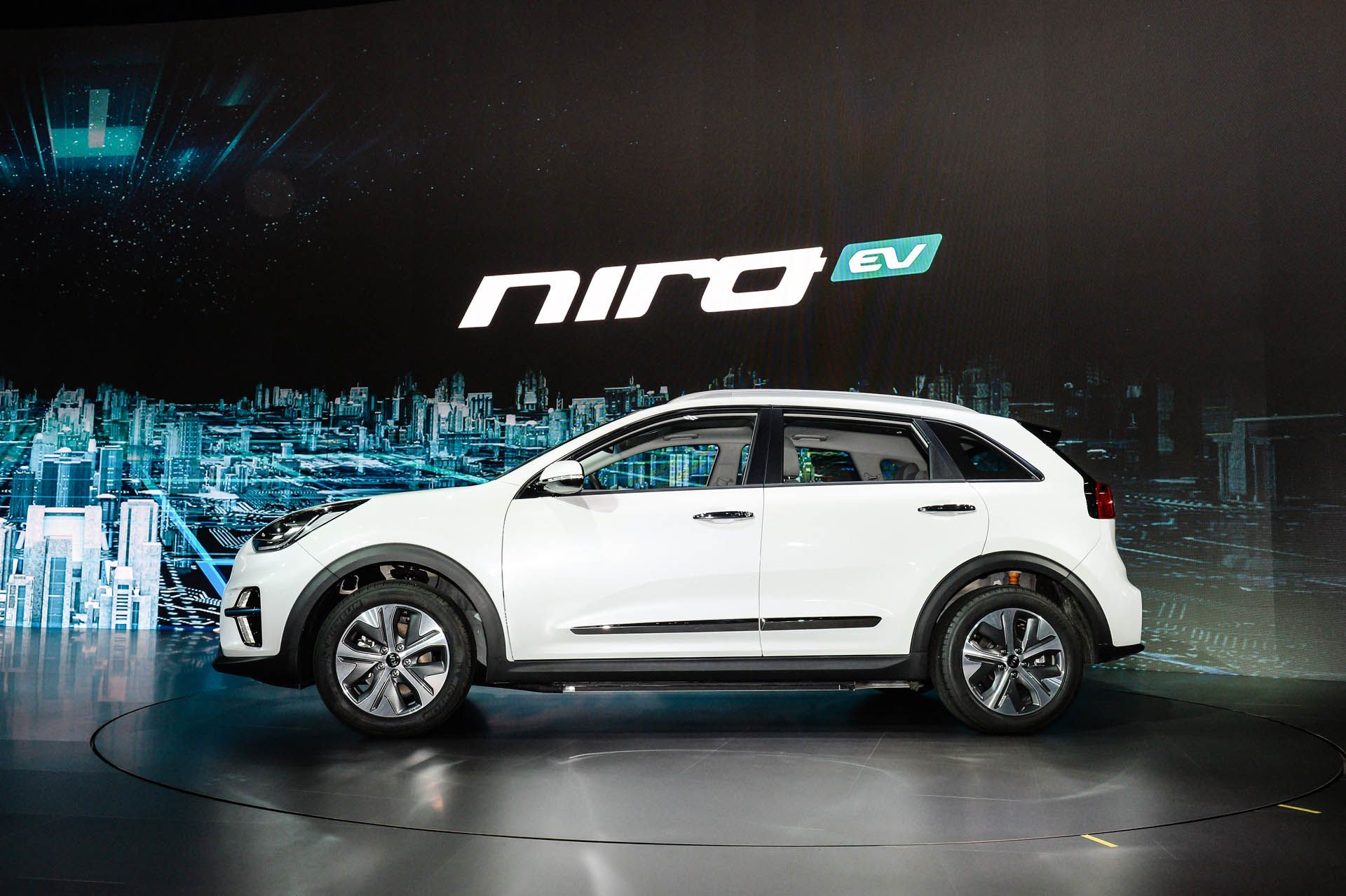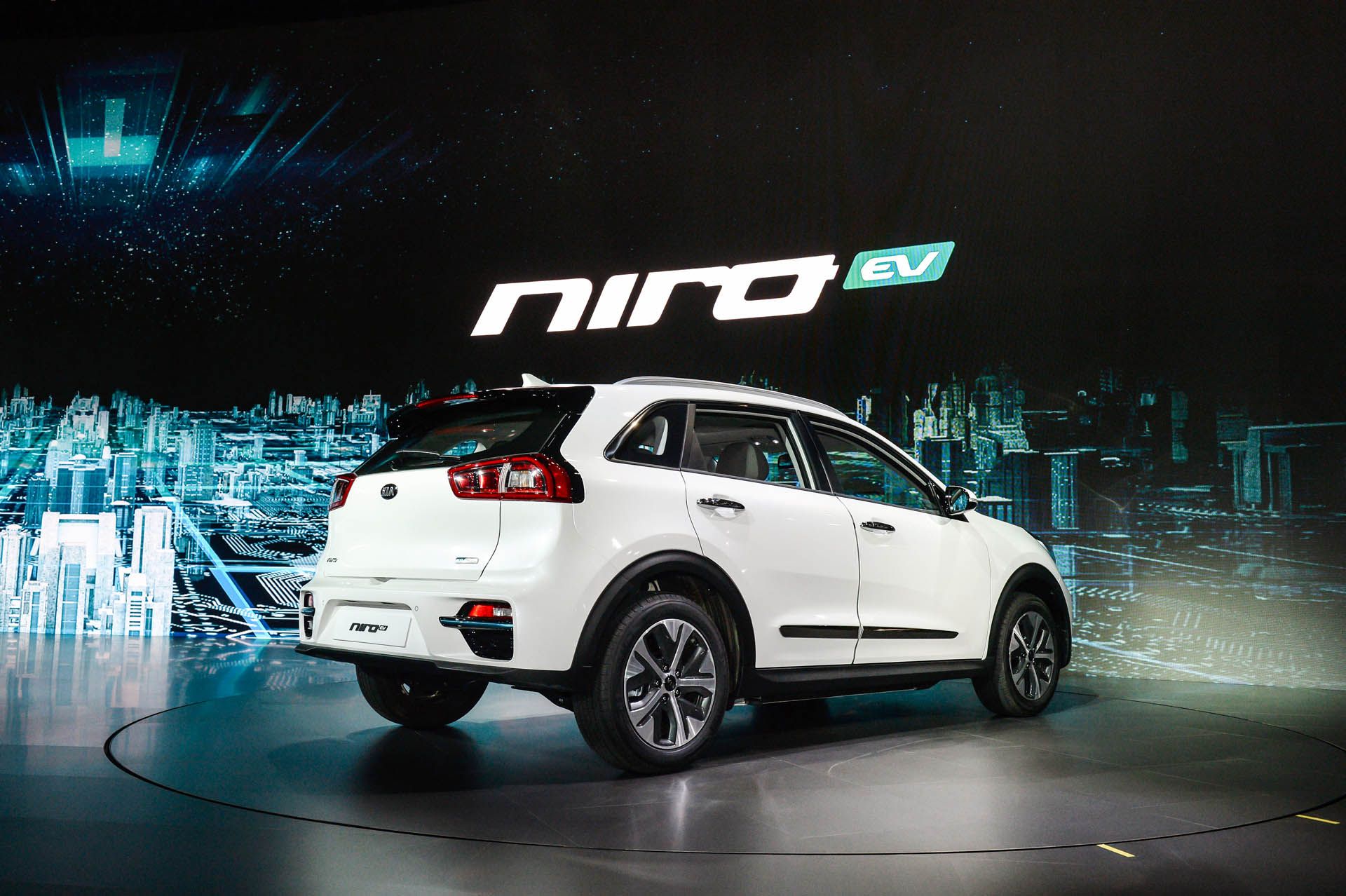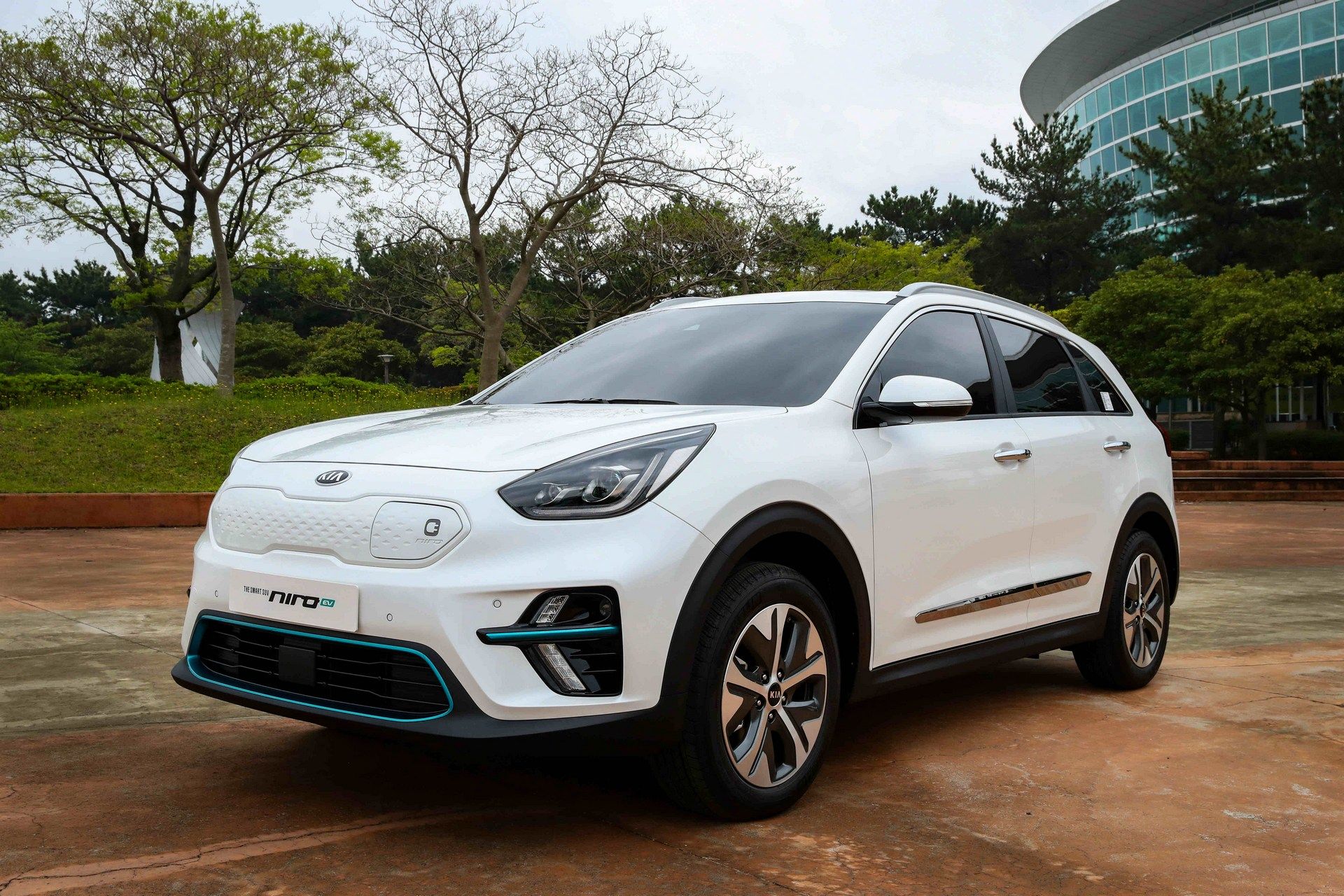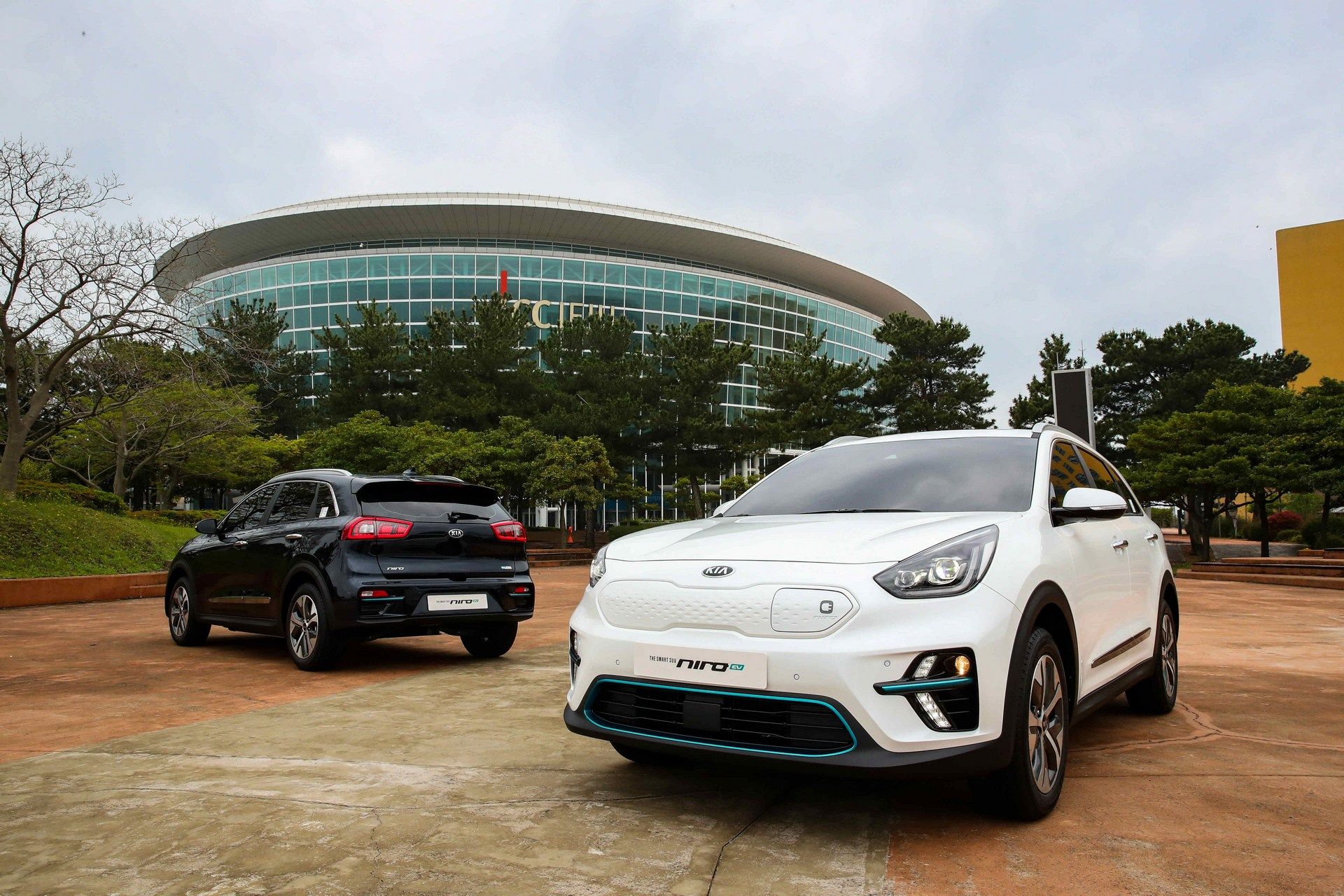Kia has recently started taking orders for the new Niro EV in South Korea, but, contrary to previous reports about a winter launch, US residents will have to wait until Q1 2019 before being able to order the electric crossover.
Designed in California, USA, and Namyan, Korea, the new Kia Niro EV has a few updated body panels compared to the regular models meant to improve aerodynamics and set it apart visually as well.
The signature ‘tiger nose’ grille is blanked out (as there’s no engine to cool) and features an integrated charging port, there are redesigned air intakes, newly shaped LED DRLs, light blue trim highlights, restyled rear bumper with more blue highlights, new LED taillights and a set of 17-inch aluminum alloy wheels, with a five-spoke design and diamond-cut two-tone finish.
In the cabin, the Niro EV has new features and design elements, including light blue trim that echoes that of the exterior, a shift-by-wire drive selector, dial-style shift knob, mood lighting system, and new high-gloss black and blue trim. The 7-inch infotainment system is maintained, but the vehicle adds a 7-inch color instrument cluster,which allows drivers to check the range and see the EV powertrain information while on the move.
Also Watch: Toyota Prius Vs Hyundai Ioniq and Kia Niro In Battle Of The Hybrids
At this point, it’s unknown whether the US-market Niro EV will differ in any way from the Korean model. The latter has a 64kWh lithium-polymer battery that allows it to travel up to 385km (239mi) on a single charge and can be recharged up to 80 percent in 54 minutes via a 100kW fast-charger.
Moreover, buyers will also be able to order the optional 39.2kWh lithium-polymer battery pack, which comes with a maximum driving range of up to 246km (153mi).
The electric powertrain delivers 204PS (201hp / 150kW) and 395Nm (291lb-ft) of torque to the front wheels, thus allowing the crossover to complete the 0 to 100km/h (0-62mph) acceleration in 7.8 seconds.
Equipping the Kia Niro EV is a host of available driving assistance technologies, such as the Forward Collision Warning with Collision-Avoidance Assist, Lane Following Assist, which is essentially a Level 2 semi-autonomous system that operates between 0 and 130km/h (0-mph), Smart Cruise Control with Intelligent Stop&Go and others.



